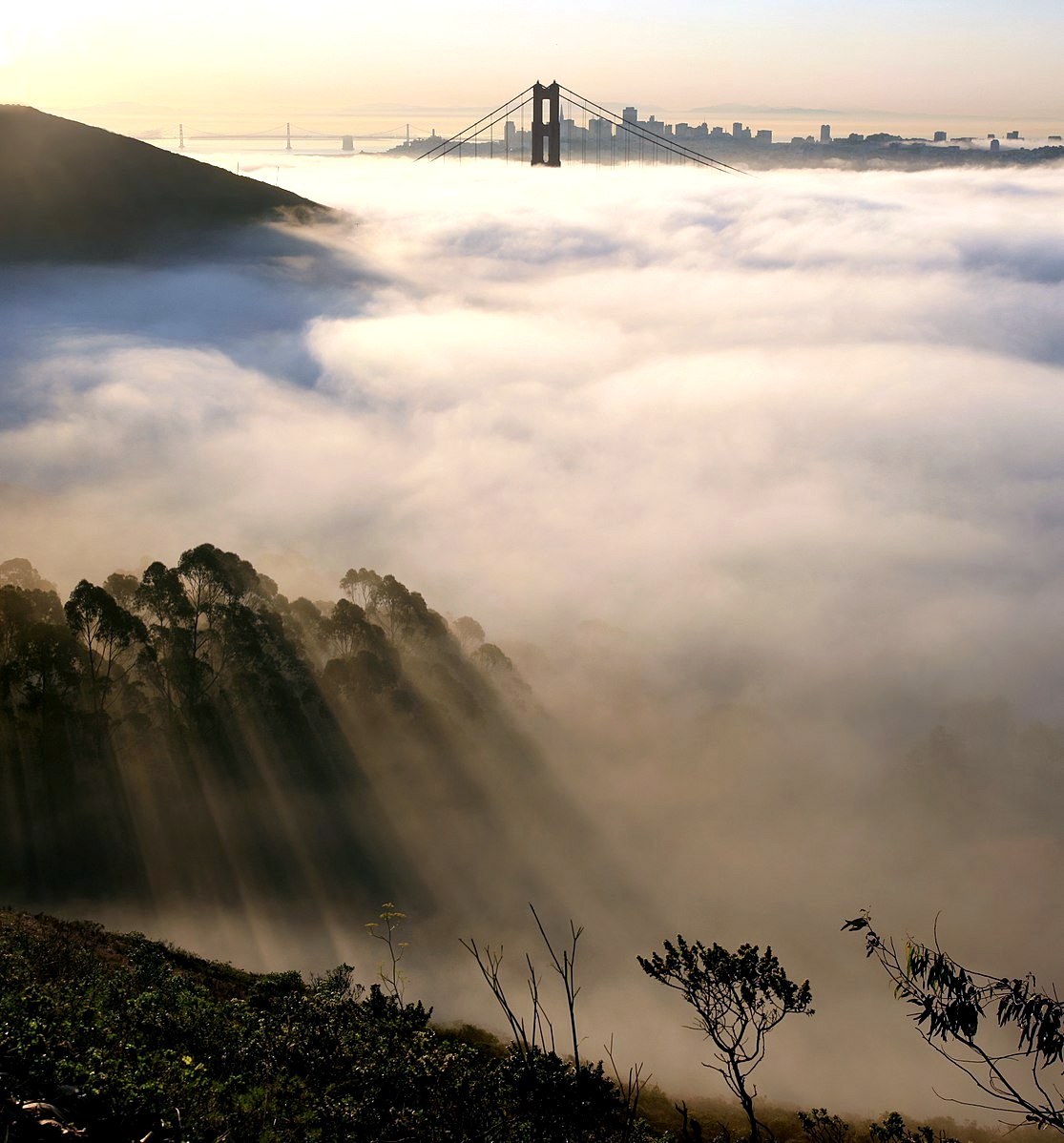Toxic Fog
Fog sampling equipment (credit: FogNet at UCSC)
In coastal California, a fog season develops in late Spring during May-July. It is a beautify, misty environment.
Fog forms when an air mass moves over cold ocean currents near a coastline. It is influenced by air temperature, topography, and wind conditions. Fogs are particularly common feature along the entire West Coast. However, something has now become altered in this important atmospheric condition which is not benign.

Coastal California Fog Layer (credit: Wikicommons)
Professional and citizen-scientists using the University of California environmental monitoring system, FogNet, have been sampled fogs on the northern California coast from Monterrey to Eureka for several years. Their measurements have detected an unwanted bit chemistry attached to the fogs---toxic mercury.
Researchers at Moss Landing Marine Laboratory and UC Santa Cruz have conducted boat excursions to the California continental margin to determine where the mercury might be originating. Sampling the water column, marine phyto-plankton, and sediments from the sea bed, the Lab has determined the powerful California Current was pulling dimthylmercury (a neurotoxin) from the depths. Marine aerosols were then converting the water chemistry to methylmercury in the fog. Their findings were presented at the American Geophysical Union meetings in San Francisco where one of the researchers said:
"when the fog moves ashore the mercury is deposited on the land. That’s the working model we've now developed."
Mercury is a toxic metal produced by coal-fired power plants, certain mining operations like gold mining, and various other industrial processes. Mercury pollution in the oceans comes from run-off deposits off the landscape. The metal is readily absorbed by plankton and moves up the food-chain into the blood and tissues of marine mammals, as well as salmon and other fish. It can cause serious neurological and reproductive problems in people if ingested in high concentrations. A video was produced to illustrate how mercury is delivered to land by fog
Additional research is needed to determine the amount of mercury being deposited by toxic fogs and the health consequences. However, the altered mists are another example of environmental connections inherent to natural environments on which animals, plants, and humans depend.
WHB